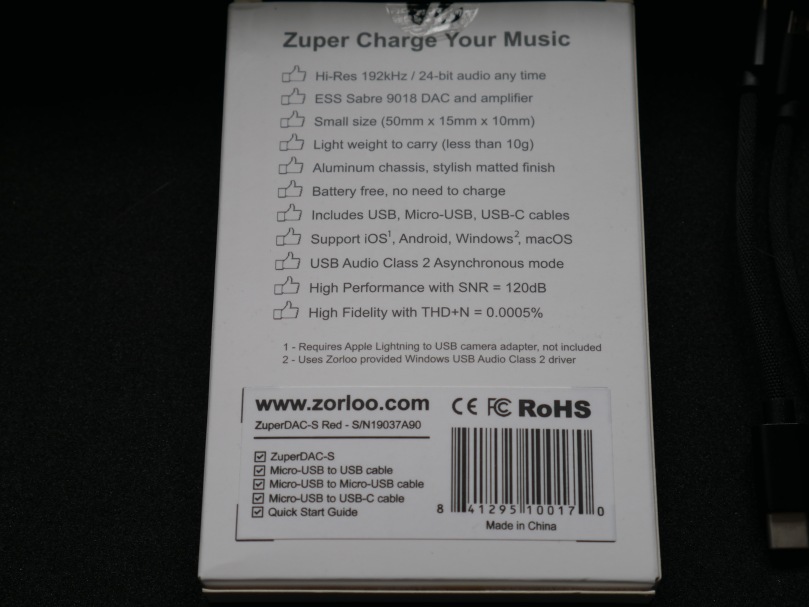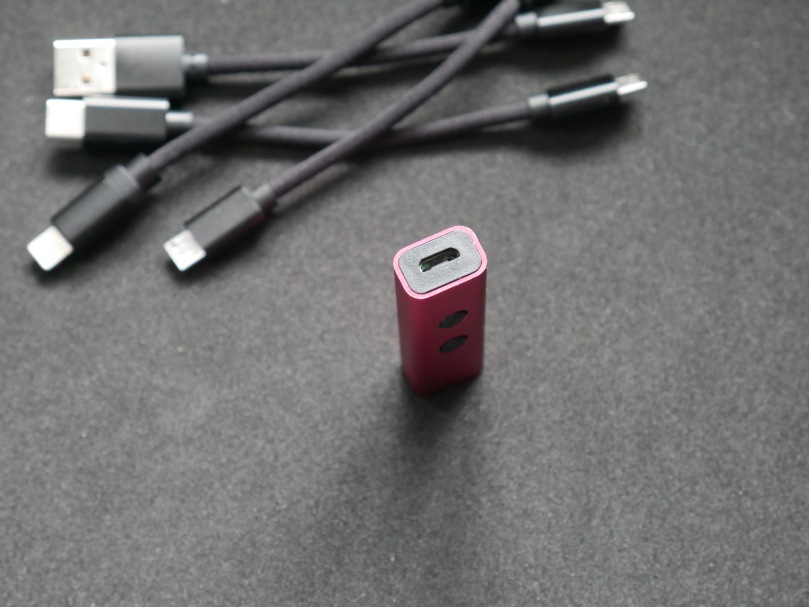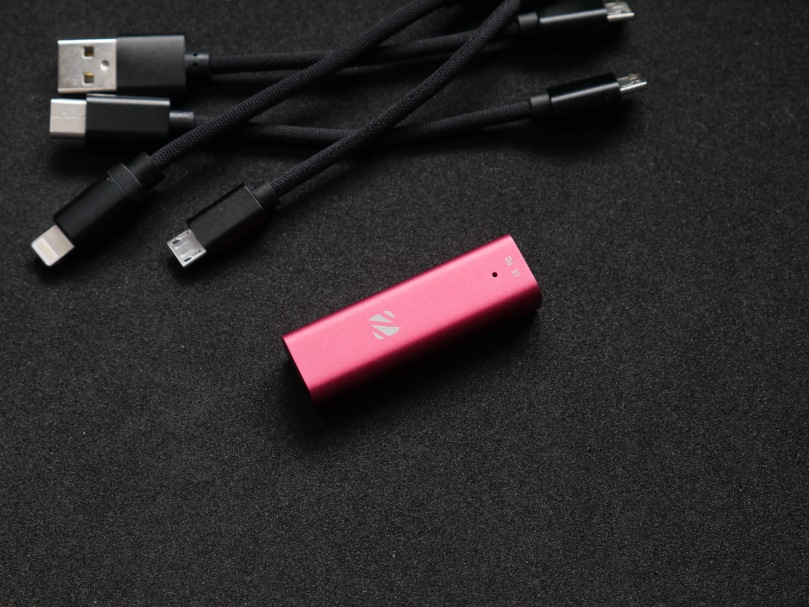Price: 79$ (89$ with iOS cable)
Where to buy: https://www.zorloo.com/shop-zorloo and https://www.massdrop.com/buy/zorloo-zuperdac-s when dropped
Specifications:
- ESS Sabre 9018Q2C as DAC
- USB Audio 2.0 Asynchronous Mode at 192kHz 24-bit
- 50x16x10mm
- Impedance < 2 Ohm
Thanks to Zorloo for providing this sample to review.
It’s been awhile since I’ve reviewed the Audirect Beam, a DAC-Amp with incredible performance and features for such a small form factor. While that model was based on ESS Sabre 9118, this model by Zorloo uses the older 9018, the same base DAC of the M7 by FiiO.

Unboxing and first impressions
This white box is very rational: small, with specifications written on the back and everything needed on the inside. This is the “special” edition, with a cable for iOS too. The standard edition doesn’t have one, and you’d need a camera adaptor to work on iOS. Inside the box there are three more cables, all with micro USB at one end; one is micro USB on the other end too, one is USB type C and the last one is USB A. We also find the ZuperDAC-S itself in a matte magenta finish, and a manual. The DAC uses a micro USB and it’s able to work on every OS, both mobile and desktop. It’s actually pretty lightweight and solid and the build quality is average, with metal for the shell and plastic for the two buttons (for volume up and down). The jack plug is a 3.5mm, unfortunately not gold-plated.
I’ve tested this DAC with a lot of earphones: Tin HiFi T2 Pro and T3, Simgot EM1, BGVP DMG and others. I have an Audirect Whistle too, and I’ve reviewed the Beam. So, I’m able to compare the threes under a few ways. Zorloo says this is a DAC and doesn’t mention the Amp side. But you can consider it an Amp by comparing it with the efficiency of your stock DACs, because the perceived volume, in the end, is way higher by using the ZuperDAC-S.

Features
Audirect Whistle and Beam support DSD, while Zorloo ZuperDAC-S don’t. Is it a problem? I personally don’t mind, but a lot of people actually care about that format. Both the Whistle and the Beam have a led that switches between PCM and DSD, but you obviously have to use a source which supports DSD natively. Most of the times, by using them with your phone or your PC, if you don’t have a specific program to run DSDs, you will listen to them converted to PCM. So, this doesn’t make a lot of a difference.

Whistle doesn’t have any button. ZuperDAC-S has two buttons for volume. Beam has a lever which works for volume and play/pause. Look at this progression: everything concerning these three products follows it. Let’s explain better.
Whistle doesn’t have any particular function: it’s a DAC/Amp, it works with every OS too, but you have to use your source for the volume and other controls. I personally use Android and Mac OS, so I won’t give you any particular information with iOs and Windows, at least for now. Beam has a really interesting feature: its lever works directly on your system volume (on Android for sure), so you always know your percentage of listening. At the other hand, you are stuck with your device maximum volume. ZuperDAC-S is different: its buttons change the volume independently from your source. This is a bad thing if you need to precisely know the volume of your listening, but it’s good if your stock volume steps finish at a level that’s not enough high for you. Be careful: this is true on Android, but not on Mac OS. On Android, you can change both your system volume and your DAC volume, while on Mac OS your system volume, even though it’s graphically changing, always remains the same. So, you must change it by using the buttons on your DAC. Here I encountered two problems. The initial volume on Mac OS is at maximum level: pay attention and take it down before starting listening to anything. The other issue concerns this: when you press the buttons on the DAC, you move it a little bit; sometimes it’s enough to disconnect it.
My overall ranking on features is: Whistle as last (but it’s not sold anymore), ZuperDAC-S second and Beam first.

Sound
Remember: every consideration comes by avoiding the earphones characteristics, which I know and I’ve already considered by writing about this DAC.
I don’t want to talk a lot about the sound of the other characters: if you want, you can read their reviews. But I summarize my experience quickly here, so it’s easy for you to understand. Whistle: it’s sibilant. I think they did a giant step up with the Beam. Which was a little bit warmer than neutral for me, as a source. But warm is better than harsh. Zorloo stays in the middle: the ZuperDAC-S is the most neutral of the threes. ESS Sabre 9018 is a really capable DAC, and I already believed it by trying a variant of it inside my FiiO M7. I think that the FiiO sounds a little bit brighter than this Zorloo, actually. But there are a lot of variables which have to be considered, like the OS, other hardware components, ecc.. I think it’s not so useful talking about soundstage and other aspects which concern more the earphones themselves, rather than the DAC. This is an instrument which honestly did everything well by carrying and improving the sound coming from my source (my phone, mainly). I liked the smoothly reached sub-bass, the controlled mid-bass (which may sound slightly colored, giving this pleasant perception of warmness); I like mids, which benefit of a precise layering between instruments, while giving space and airyness to vocals; I like treble, too, which doesn’t sound sibilant nor harsh but it’s robust and sparkly when needed. If I had to compare the stock USB C to 3.5mm adapter of my phone (Xiaomi Mi MIX 2) to this Zorloo, I would say that I hear improvements on the volume area, on the scene reproduction and on dynamics. Being a sort of an Amp obviously gives more body to your sound, which benefits not only from a higher volume, but also from a better detail and precision. I wouldn’t say, then, that this sound is holographic (which is not something I’m a fan of, though): this is a good stereophonic representation, with believable imaging and spatial distribution of instruments; not crazy surrounding simulation, luckily. Every aspect of your “stock” sound (coming directly from your phone) here is improved: punchiness and speed in bass, clarity, space for every instrument, control in highs. I really enjoyed this sound.

Conclusion
I can’t compare the ZuperDAC-S to the Whistle: for my taste, everything did by Zorloo is better between these two particular models. However, I find the challenge open between the ZuperDAC-S and the Audirect Beam: while I still prefer the Beam (for using USB C, that really useful multi-functional lever and the updated DAC inside), I have to admit that Zorloo offers its DAC for 20$ less! And honestly, while in an absolute sense I may consider the Beam superior, I think the ZuperDAC-S is really worth its price and really is a solid competitor to its counterpart. Absolutely recommended.


